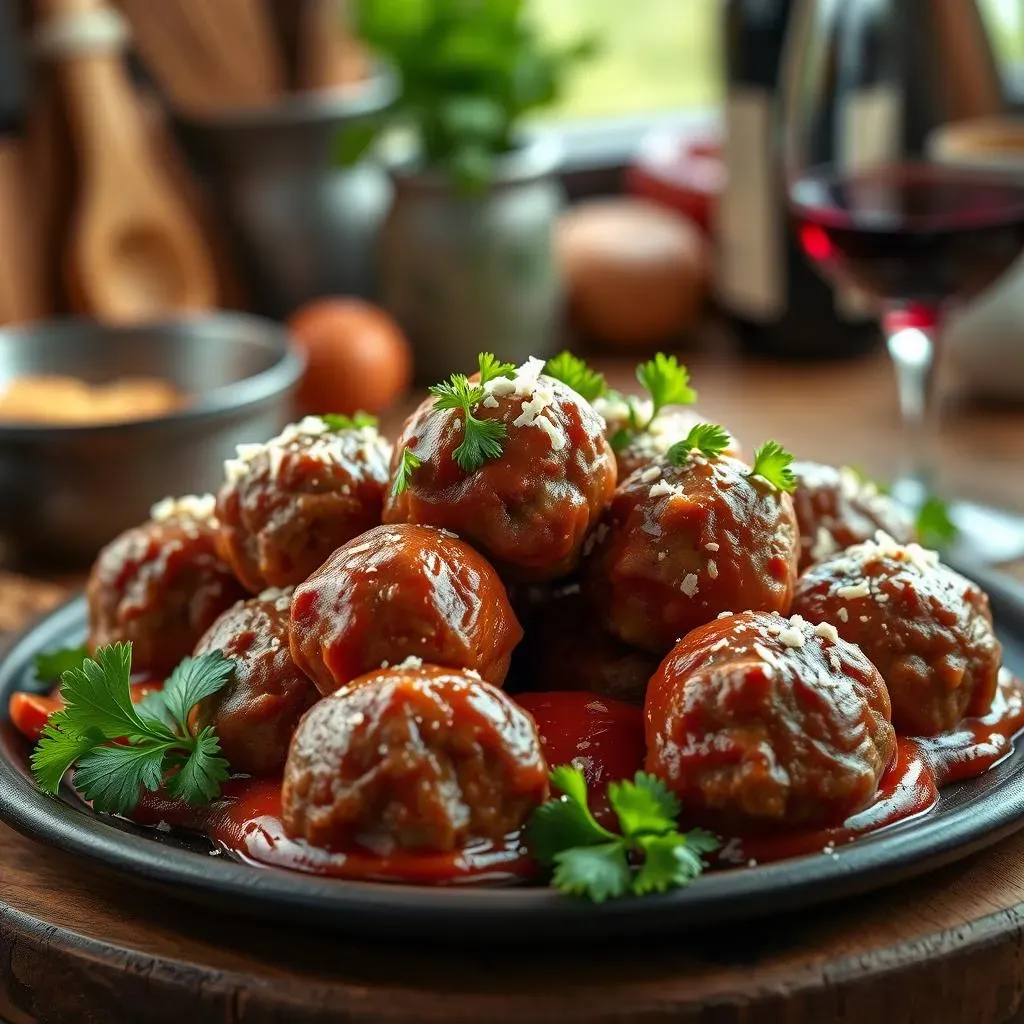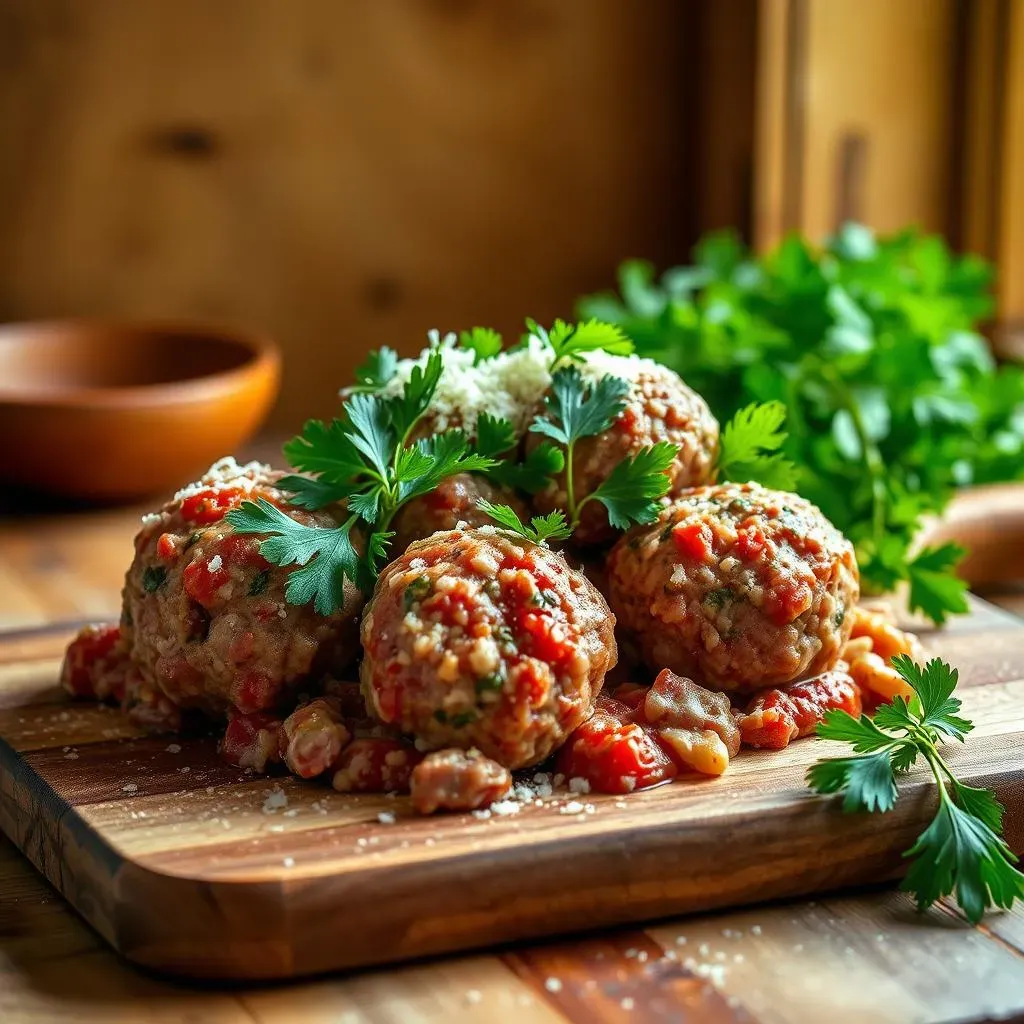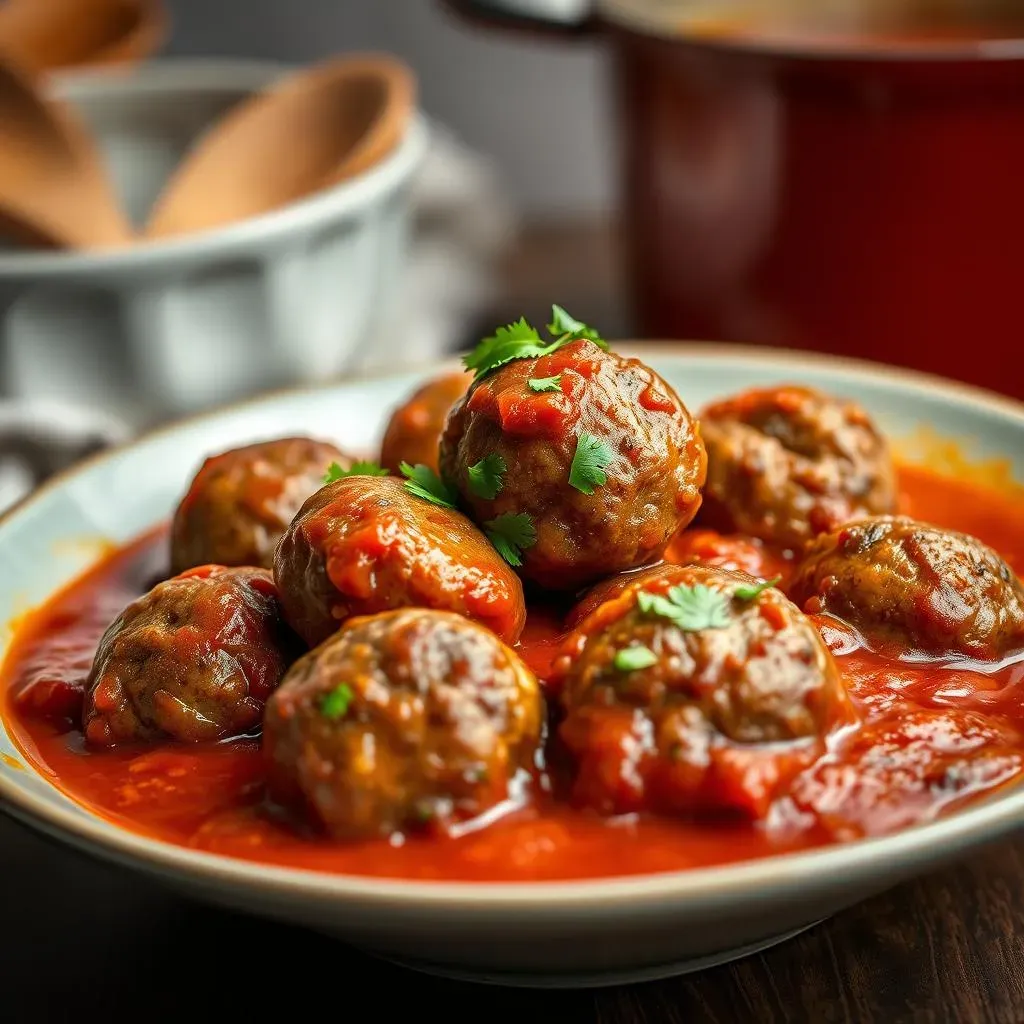Are you ready to elevate your meatball game? Forget bland, dry meatballs – we're diving headfirst into the world of succulent, flavor-packed beef pork veal meatball recipe perfection! This comprehensive guide will take you on a culinary journey, from selecting the finest cuts of meat to mastering the art of the perfect meatball mix and creating a rich, flavorful sauce to complement your culinary masterpiece. We'll explore the unique characteristics of beef, pork, and veal, revealing why this trifecta of meats creates the most tender and flavorful meatballs you've ever tasted. Get ready to learn the secrets to achieving perfectly browned exteriors and juicy, tender interiors. We'll walk you through each step of the process, providing expert tips and tricks along the way, ensuring your meatballs are a triumph every single time. Whether you're a seasoned chef or a kitchen novice, this guide will empower you to create restaurant-quality beef, pork, and veal meatballs that will impress your family and friends. So, let's get started and transform your next meal into an unforgettable experience!
Mastering the Art of the Beef, Pork & Veal Meatball

Mastering the Art of the Beef, Pork & Veal Meatball
The Holy Trinity of Meatballs: Why Beef, Pork, and Veal?
Let's talk about the magic behind this meatball trifecta. Beef provides that hearty, savory base. It's the anchor that holds everything together, offering a rich depth of flavor. Pork, on the other hand, brings incredible juiciness and a subtle sweetness that balances the beef's intensity. It's the secret ingredient to unbelievably tender meatballs. Then there's veal, the often-overlooked star. Veal adds a delicate, almost creamy texture that elevates the overall mouthfeel, creating that melt-in-your-mouth experience we all crave. Think of it as the velvet glove to the iron fist of the beef and pork.
Seriously, don't underestimate the power of this combination! Each meat contributes something unique, creating a symphony of flavors and textures that a single-meat meatball just can't match. Trust me, once you've experienced the magic of a beef, pork, and veal meatball, you'll never go back. For more tips on beef meatballs, check out our beef meatball recipe tips article. You'll find even more ways to perfect your meatball game.
Meat | Flavor Profile | Texture Contribution |
|---|---|---|
Beef | Savory, Hearty | Structure, Body |
Pork | Sweet, Juicy | Tenderness |
Veal | Delicate, Creamy | Melt-in-your-mouth texture |
The Art of the Meatball Mix: Techniques for Success
Now, let's get down to the nitty-gritty: creating the perfect meatball mix. The key here is *gentle* handling. You don't want to overwork the meat; that'll make your meatballs tough. Think of it like kneading bread – you want to combine the ingredients, but not beat the life out of them. Use your hands lightly, just enough to incorporate everything evenly. Too much mixing leads to dense, chewy meatballs, which is a culinary crime against deliciousness. The best beef meatball recipe relies on gentle handling.
Another crucial element is the balance of moisture. Too dry, and your meatballs will crumble. Too wet, and they'll be dense and tough. Aim for a slightly moist mixture that holds its shape when gently squeezed. If it's too dry, add a tablespoon or two of milk or water at a time, mixing gently until you reach the right consistency. And speaking of consistency, if you're looking for a simpler approach, you might enjoy our simple beef meatball recipe .
- Gently combine ingredients.
- Avoid overmixing.
- Aim for a slightly moist consistency.
- Adjust moisture as needed.
Choosing Your Meats: Beef, Pork & Veal for the Best Flavor

Choosing Your Meats: Beef, Pork & Veal for the Best Flavor
The Beef: Hearty and Savory
Let's start with the foundation: beef. We're not talking about just any ground beef here. For the best flavor and texture, aim for a blend that's around 80/20 – 80% lean, 20% fat. That extra fat is crucial for juiciness. Leaner beef will result in dry, crumbly meatballs, which is a tragedy no one wants to experience. Think of the fat as the meatball's secret weapon against dryness. It’s the key to that melt-in-your-mouth texture. Consider ground chuck, it often has a good balance of fat and leanness. For more information on choosing the right beef, check out our guide on beef meatball recipes.
Don't be afraid of a little fat! It's not the enemy; it's your friend. A slightly higher fat content ensures your meatballs stay moist and tender, even after cooking. Remember, we want juicy, flavorful meatballs, not dry, crumbly disappointments. You can always adjust the leanness depending on the other meats you're using, as we'll discuss next.
- Choose 80/20 ground beef (or similar).
- Avoid overly lean options.
- Fat contributes to juiciness.
The Pork: Juicy and Sweet
Now, let's talk pork. Pork adds a delightful sweetness and incredible juiciness to the mix. It's the secret ingredient that takes these meatballs from good to phenomenal. Ground pork is typically more tender than ground beef, contributing to the overall texture of the meatball. Look for ground pork shoulder or a similar cut – these options tend to be more flavorful and juicy than leaner cuts. You'll find that using pork results in unbelievably tender meatballs. If you are looking for a quick and easy meatball recipe, take a look at our easy beef meatball recipe.
The fat content in ground pork is generally higher than in ground beef, which is a good thing! This extra fat helps keep the meatballs moist and adds to their overall richness. The combination of pork and beef creates a perfect balance of flavor and texture. The pork's sweetness complements the beef's savory notes. It's a match made in meatball heaven!
Meat Type | Fat Content | Flavor Contribution |
|---|---|---|
Ground Pork Shoulder | Higher | Sweetness, Juiciness |
Ground Pork Loin | Lower | Leaner, Less Rich |
The Veal: Delicate and Creamy
Finally, let's not forget the veal! Veal is often overlooked, but it plays a vital role in creating exceptionally tender and flavorful meatballs. Veal adds a unique creamy texture and subtle sweetness that elevates the overall meatball experience. It's like the secret ingredient that takes your meatballs from "good" to "oh-my-goodness." It contributes a delicate flavor and a luxurious mouthfeel that's hard to replicate with other meats. For those looking for a more unique meatball experience, our unique meatball recipe might be a good option.
The lower fat content in veal helps to balance the richness of the beef and pork. It prevents the meatballs from being overly greasy while contributing to their tender texture. Think of it as the secret weapon for achieving that perfect melt-in-your-mouth quality. The addition of veal creates a truly unique and unforgettable meatball experience. You'll find that the combination of beef, pork, and veal results in a superior meatball in terms of both flavor and texture.
"The perfect meatball is a balance of savory, sweet, and delicate flavors, and the combination of beef, pork, and veal achieves just that!" - *Anonymous Meatball Connoisseur*
From Meatball Mix to Marinara: A StepbyStep Beef, Pork & Veal Meatball Recipe

From Meatball Mix to Marinara: A StepbyStep Beef, Pork & Veal Meatball Recipe
Crafting the Perfect Meatball
Alright, let's get our hands dirty! With your perfectly prepped meat, it's time to create the magic. Remember, gentle is the name of the game. We're not trying to make meatloaf here; we want tender, juicy meatballs. Combine your ground beef, pork, and veal in a large bowl. Add your eggs, grated cheese (freshly grated is best!), minced garlic, chopped parsley, salt, and pepper. Mix it all together gently, just until everything is combined. Overmixing is the enemy of a good meatball; it leads to tough, dense little spheres of disappointment. For a simpler approach, try our easy beef meatball recipe.
Now, let's talk breadcrumbs. Use good quality breadcrumbs—freshly made if you're feeling ambitious—and add them gradually to your meat mixture. You want enough to bind everything together, but not so much that your meatballs become dry and crumbly. A little milk or water can help to adjust the consistency. Aim for a mixture that's moist but holds its shape. If you're a visual learner, our beef meatball recipe with photos might be helpful.
- Gently combine all ingredients.
- Add breadcrumbs gradually.
- Adjust moisture with milk or water.
- Aim for a moist, cohesive mixture.
Rolling, Browning, and Simmering to Perfection
Time to roll! Using your hands (lightly oiled to prevent sticking), gently shape the mixture into meatballs. Aim for uniform size – this ensures even cooking. If you're making a large batch, a cookie scoop can be your new best friend for consistent sizing! Once you have your perfectly formed meatballs, heat a generous amount of olive oil in a large skillet over medium heat. Brown the meatballs in batches, ensuring not to overcrowd the pan. This browning step is crucial; it adds delicious flavor and a satisfyingly crispy exterior. For a healthier alternative, you could bake them, but pan-frying is the classic method.
After browning, it's time for the simmer. Transfer your beautifully browned meatballs to a pot or Dutch oven. Cover them generously with your favorite marinara sauce (homemade is best, but store-bought works in a pinch). Simmer gently over low heat for at least 45 minutes, or until the meatballs are cooked through and the sauce has thickened. This slow simmering allows the flavors to meld, creating a truly unforgettable meatball experience. If you're short on time, consider our beef meatball soup recipe – a quicker option.
Step | Description | Tip |
|---|---|---|
Rolling | Shape into uniform meatballs. | Use a cookie scoop for consistency. |
Browning | Brown in batches in olive oil. | Don't overcrowd the pan. |
Simmering | Simmer in sauce for at least 45 minutes. | Low and slow for best results. |
Serving Suggestions and Storage
And there you have it! Your perfectly cooked beef, pork, and veal meatballs. Serve them over pasta, on a hoagie roll, or as a standalone appetizer. They're incredibly versatile! A sprinkle of fresh parsley or a drizzle of balsamic glaze adds a touch of elegance. The possibilities are endless. Pair them with a simple side salad and some crusty bread for a complete meal. If you're feeling adventurous, you could try our beef stroganoff with meatballs recipe for a unique twist.
Leftovers? Absolutely! Store your meatballs in an airtight container in the refrigerator for up to 3 days. You can also freeze them for longer storage. To freeze, let them cool completely, then place them in a freezer bag or container. They'll keep for up to 3 months. Whether you serve them immediately or enjoy them later, these meatballs are guaranteed to be a hit! For more storage tips, see our article on freezing beef meatballs.